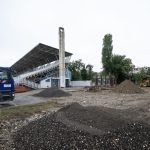The global growth of medical and health tourism industry is estimated at 15 to 20% per year, and by 2025, according to estimates by Business Insider, it should amount to over 120 billion dollars, writes Jadranka Primorac for Slobodna Dalmacija on December 8, 2018.
The growth in the demand for medical and health tourism services in the world is mostly generated by the crisis in healthcare systems of developed countries, the high cost of health services, long waiting lists, and the general trend of population aging. The European Commission’s most recent estimates show that in Europe by the year 2040, people older than 65 will represent 26% of the total population, so the growth in healthcare services being provided abroad will be even more critical.
The question is whether Croatia as a state is ready to respond to the future challenges to redirect at least part of this revenue to the Croatian healthcare institutions since many countries have already realized a significant economic development potential of this branch.
However, while Croatia keeps discussing its potential, governments around the world are launching various initiatives to encourage and develop the health and medical tourism market in their countries. Turkey, for example, not only invests immense financial resources in promotion and marketing but has also introduced so-called “medical visas” and special low-cost flights to Turkey.
Also, it has exempted from paying the VAT all international patients receiving medical care in the area of preventive medicine, various diagnostic services, dentistry, care and rehabilitation in all medical institutions accredited by the Ministry of Health. Also, the government has signed contracts with international social security and insurance institutions to attract seniors to come to Turkey for care and treatments.
The Health Tourism Department of the Ministry of Health has a phone contact service for international patients which provides around-the-clock translation services in four languages: English, German, Russian and Arabic, and the official goal of the Turkish government is to earn 20 billion dollars annually by 2023 from health and medical tourism.
Another good example is Hungary, which was visited by about 2.5 million medical and wellness tourists in 2017, according to the information provided by the Hungarian Statistical Office. The most sought-after services are dentistry, ophthalmology, aesthetic surgery, and medical assisted fertilization (IVF), in addition to the well-developed spa centers. Hungarian dentists, who aim to attract foreign patients, have also received substantial grants from EU funds, while on the other hand they also have the right to state funding, as part of a plan that supports the development of dental tourism in Hungary.
The targeted funding by an economic development programme, through the National Agency for Development and the Hungarian Central Operational Programme, has been received by 136 dental clinics, thus achieving a 19% increase in revenue. It is important to note that most Hungarian cities are well-connected and have several direct daily flights to almost all European cities.
Poland also has excellent results in medical tourism, particularly in the UK market, but also in the Scandinavian countries. Dental services and aesthetic surgery are still the most popular services for medical tourists, but orthopedics, neurosurgery, medical assisted fertilization treatments and oncology are also on the rise. In Poland, there is also a high level of availability of low-cost flights, inexpensive accommodation options and an attractive tourist offer, which all brings in medical tourists.
An increasing number of clinics and hospitals offer packages that include transportation to and from the airport, as well as accommodation in apartments or hotels, sightseeing of cultural sites, and gastronomic offer. The cost of treatment in Poland is up to 40% lower than in Germany or the UK. A unique feature of health and medical tourism, which makes it a real economic activity, is its multiplying effect, since it develops many different sectors, with medical tourists spending up to 30% more than regular tourists.
As far as medical and health tourism is concerned, Croatia is still trying to wake up, although it has great potential, primarily because it has a high level of medical excellence, great doctors, including some internationally renowned, as well as safety and security, which is crucial. There is a whole market of tourists who adore Croatia, but who probably do not even think they could find a solution to their health problems in Croatia. In their heads, there is no link between Croatia as a summer destination and Croatia as an accessible solution for obtaining quality healthcare. It is absurd that, of the 19 million foreign tourists who visited Croatia this year, the number of those who came for medical treatment is at the level of a rounding error.
Creating an attractive and sustainable destination for medical and health tourism requires a long-term strategy. The strength of the tourist brand which Croatia has should be exploited for further positioning on the health-tourism market. Foreign tourists do not have a generally developed trust in the Croatian health system but base it on individual experiences, and this is not nearly enough for the arrival of foreign patients.
All of us who “live” the medical tourism often find ourselves in situations in which patients coming from countries in which the perception of Croatia is not great are shocked when they discover they can get better service here than at home, often at a price which is two to three times lower than in their countries. They can also enjoy other attractions, from natural phenomena, cultural heritage to gastronomy. If we look at the surrounding states, I am sure that with a good marketing strategy we can redirect to Croatia 30% of patients coming to neighboring Hungary or Poland.
Let us not forget that Croatia has excellent potential in health tourism. For example, Slovenia and Hungary have long ago privatized or put into public-private function all their spa facilities and completely renovated them with grants from EU funds, which was the European Commission’s recommendation, since it is firmly committed to a public-private partnership, because it believes that the sluggish public sector cannot be activated without the support of a more efficient private sector, nor can it finish projects.
To make a new step forward and develop health tourism, in addition to individual activities and efforts by individual healthcare institutions, stronger state support is needed, primarily through defining and implementing clear rules which apply equally to all businesses in Croatia.
For example, the use of financial resources from European funds allocated to health should be allowed, in addition to public institutions, to private healthcare institutions as well, as it is the case in other well-regulated EU countries. Also, to make healthcare a desirable investment segment, it must be possible to use the benefits of the Investment Promotion Act, which is not the case now. Furthermore, the Croatian Tourist Board and the Ministry of Tourism already have well-developed promotion and sales channels, which need to be modernized and adapted to add new content and services that the health sector can help develop.
Nothing will happen by itself, but only because of innovative and creative individuals and companies which listen to what the medical tourism market is looking for and try to improve their offer by creating high-quality content. Global changes in this type of tourism are taking place exceptionally quickly, and we must not give over to chaos, but we have to get involved and know how to deal with them, which demands a much greater involvement from the state authorities, but also from all other stakeholders than it has been the case until now.
Given that Croatia is becoming an increasingly desirable and popular tourist destination, this moment should be used to give it added value because the effects of tourism should not be limited just to hotels, marinas or camps, i.e., “sun and sea,” but they should be much more extensive. The impact on Croatia’s reputation of this synergy between health and tourism is invaluable, and it represents an entirely different positioning of Croatia in the world, not only regarding its natural beauty but also concerning knowledge-based added value.
The author is a member of the Management Board of the St. Catherine’s Speciality Hospital responsible for financial and strategic issues. She is also the president of the Association of Private Polyclinics, Hospitals, Spas and Healthcare Institutions at the Croatian Employers’ Association.
For more on medical tourism in Croatia, click here.









